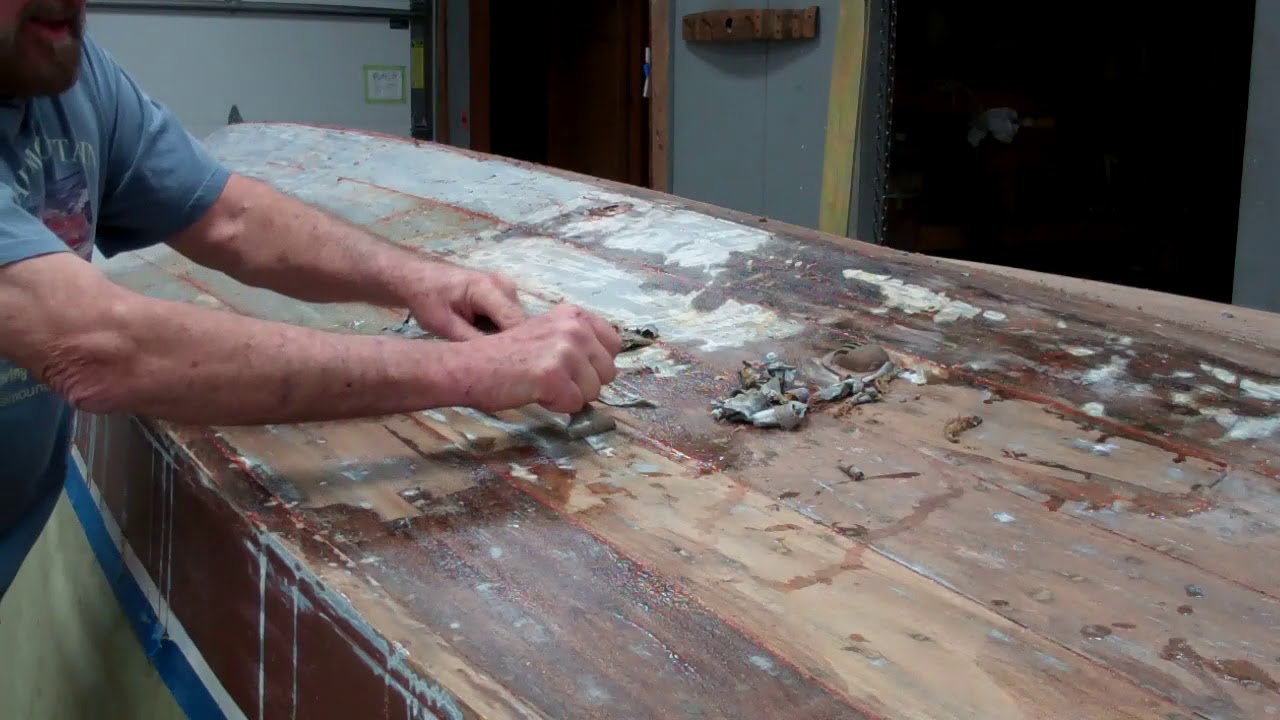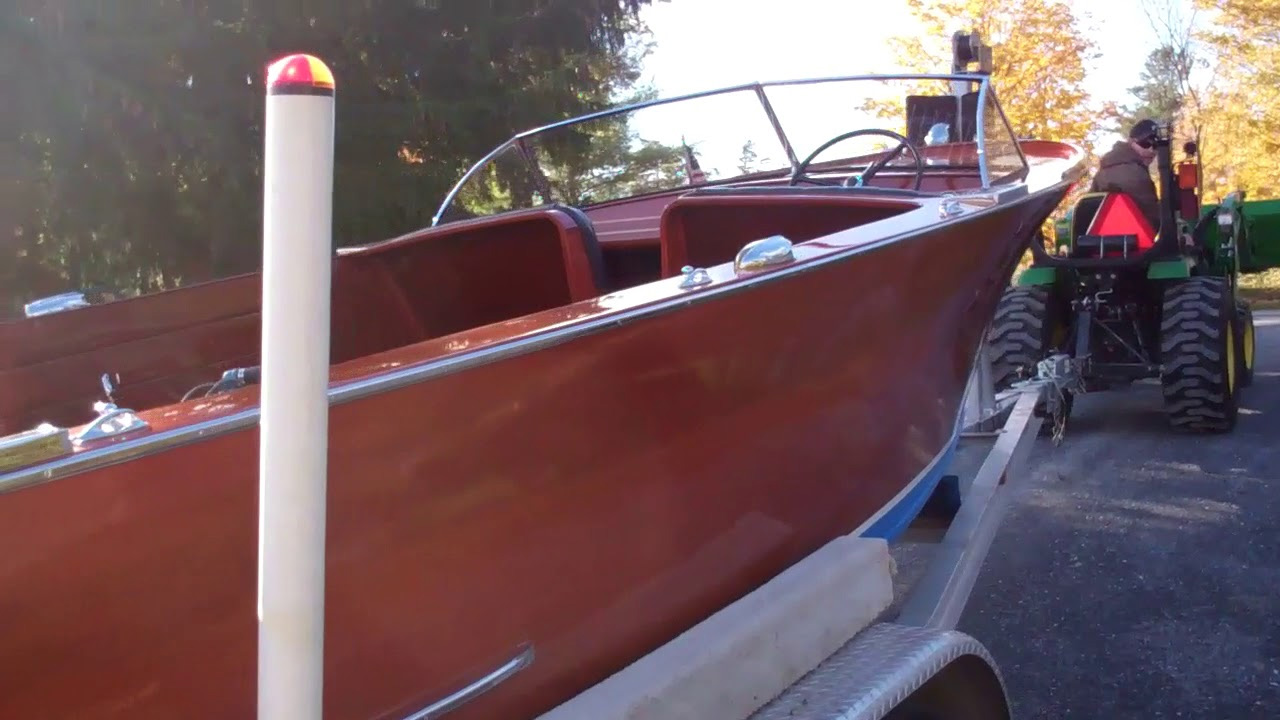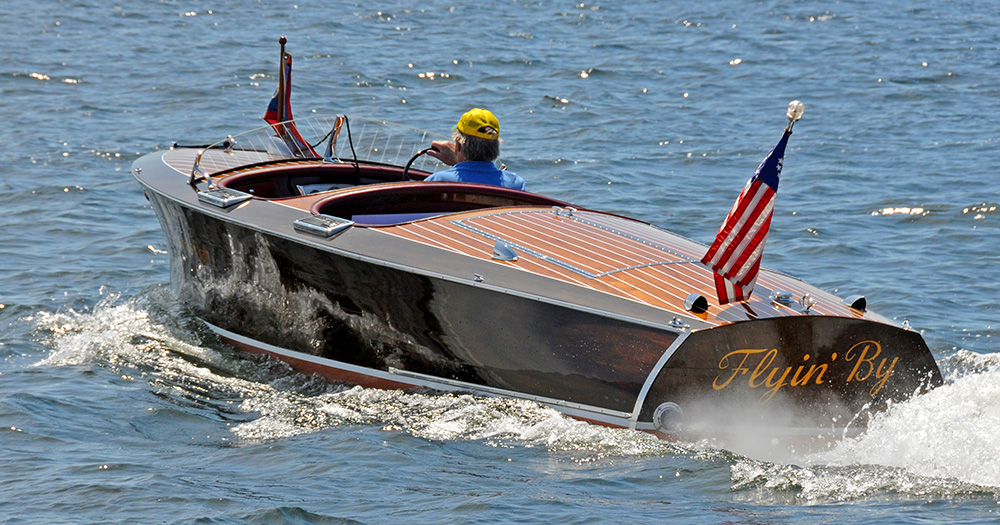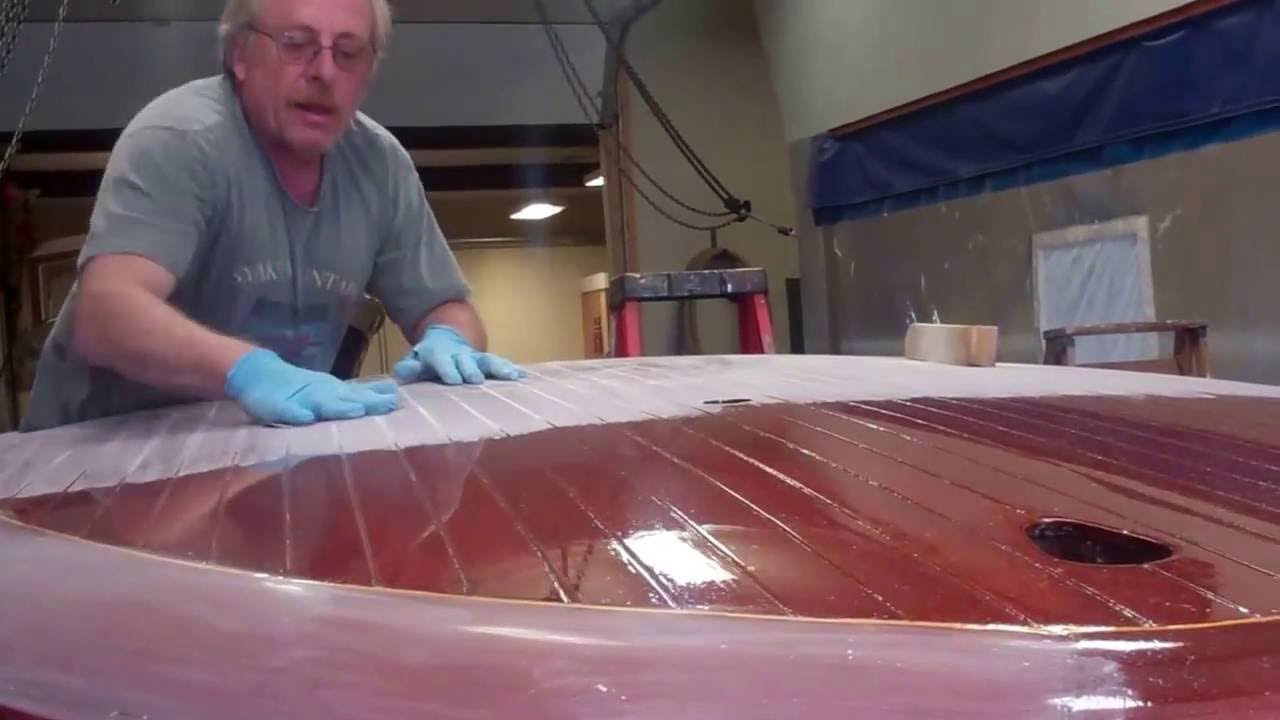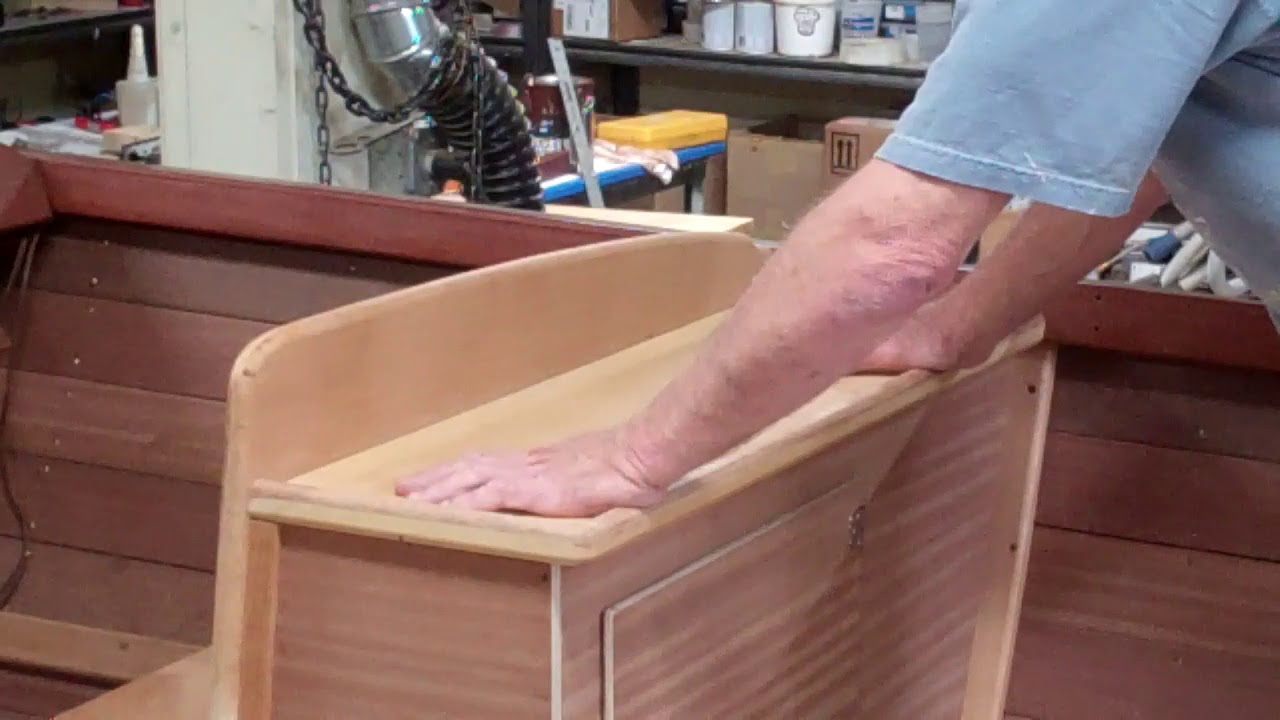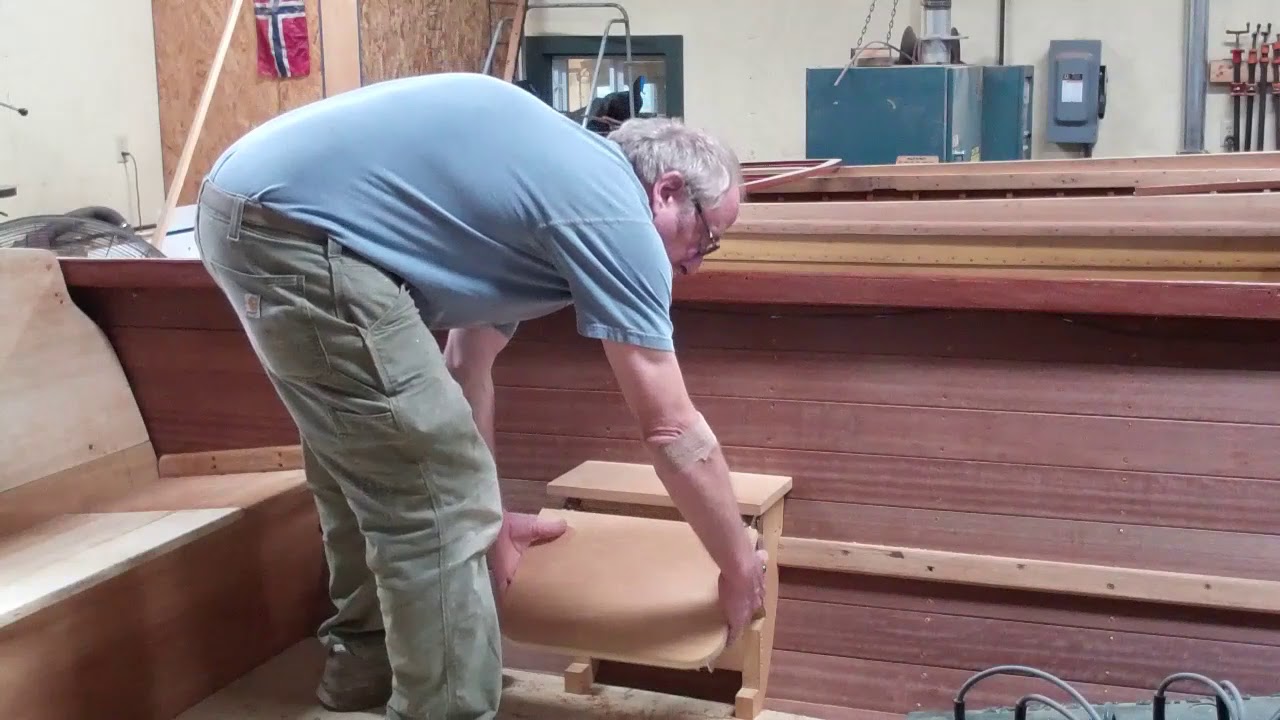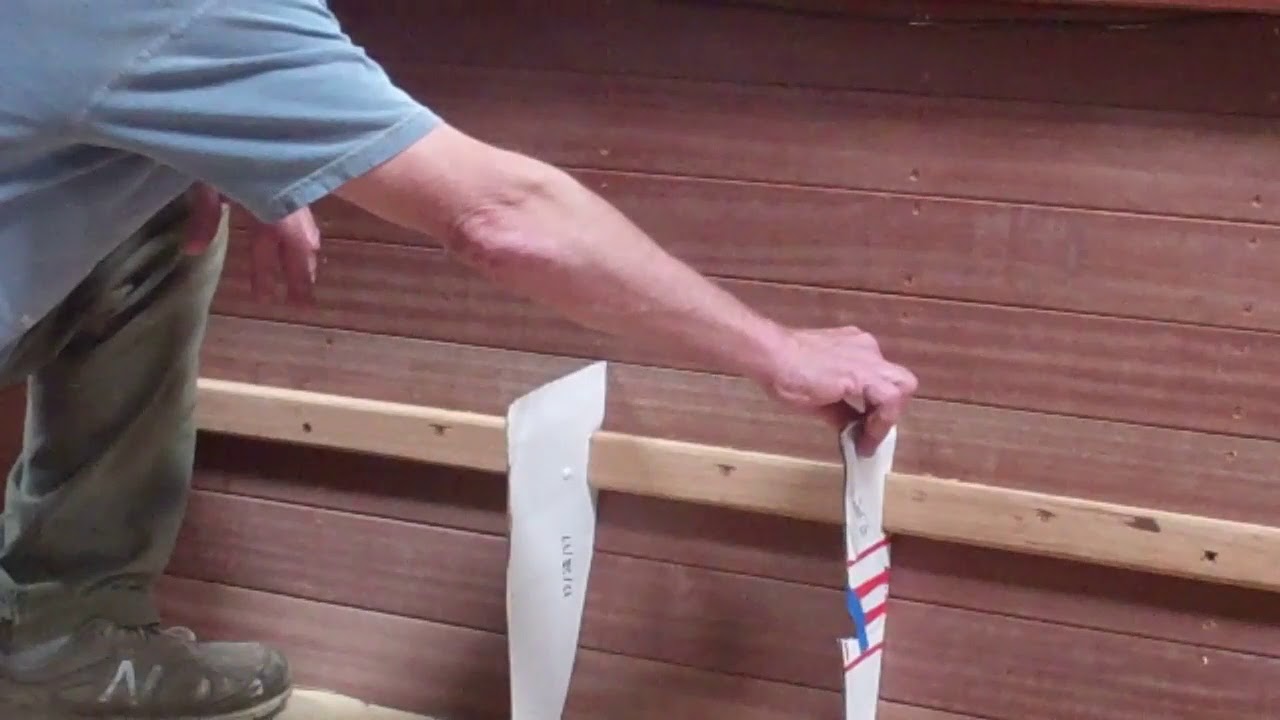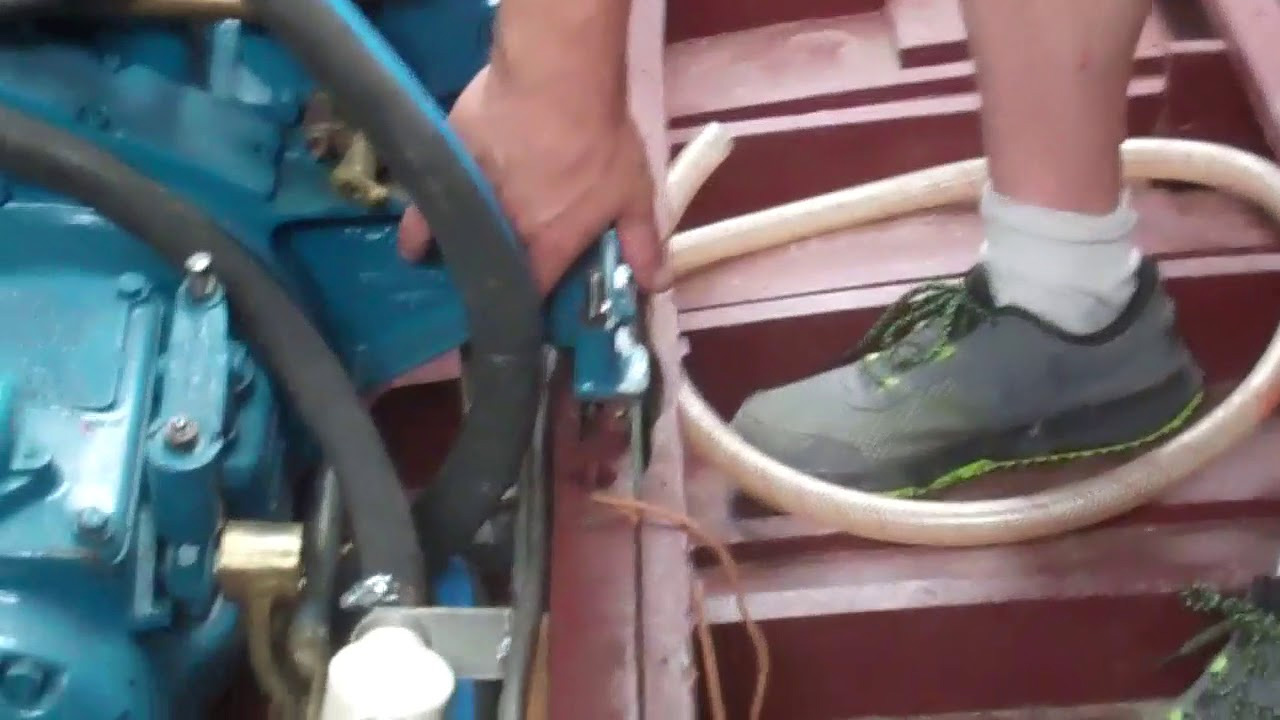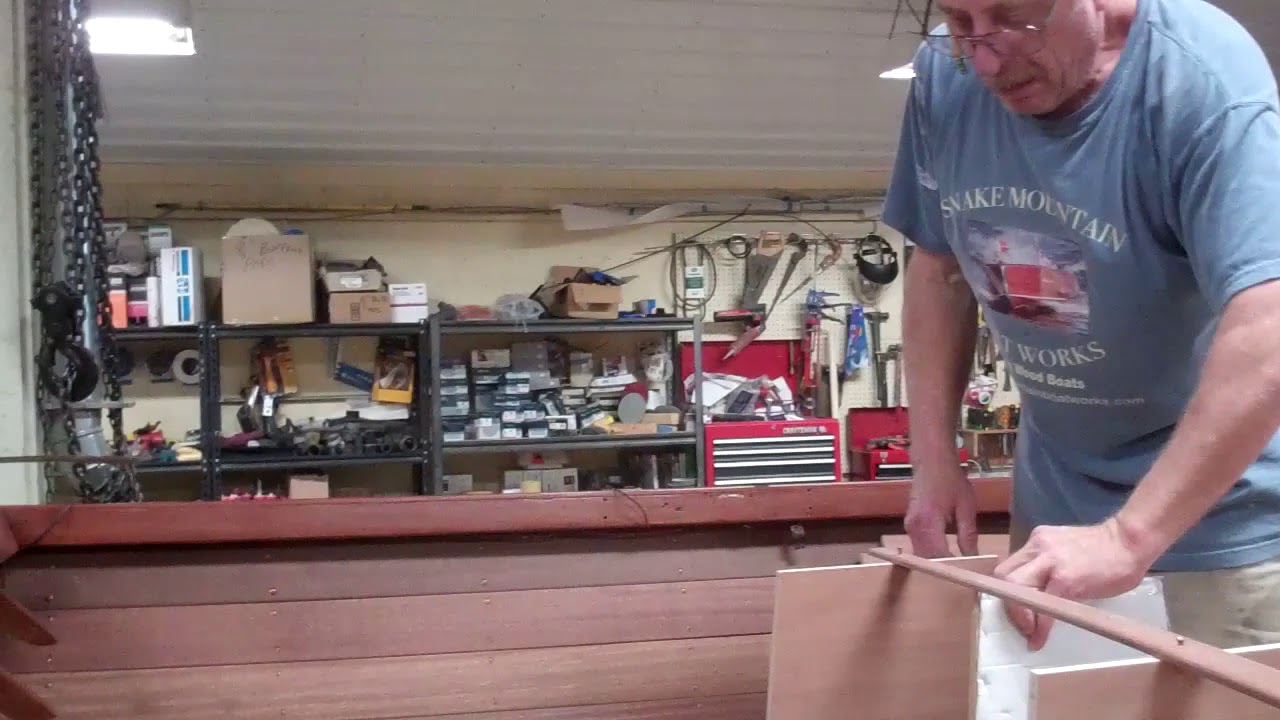Yes, once again, no matter how long I’ve been preserving wood boats, seldom does a day go by that I do not learn something new.
Long ago Don Danenberg did his best to sell me on the absolute necessity of applying five coats of 2000E to achieve a True 5200 Bottom. Yes, we are standardized on this practice, primarily because I so respect Don’s wisdom and experience, but I must say, I’ve always wondered, “Is it really that tough? Is it really the tenaciously adhering and true barrier coat, one that combats water infiltration to the fullest extent possible?”
Don makes his argument most forcefully in his seminal article, “What is a True 5200 Bottom?” that he published in the Sept-Oct 2014 issue of Classic Boating magazine. Here is a link to PDF copy.
Any doubts I may have harbored evaporated over learning firsthand what it takes to remove this stuff from mahogany planking.
My lessons for today:
- Allow the Circa 1850 Heavy Body Paint and Varnish Remover enough dwell time to do its work, but not so long that it begins drying out.
- Use a SHARP scraper, bonehead! I began stripping Flyin’ By’s bottom on November 2, which is when I shot the previous video that chronicles the epic battle between five full coats of Interlux Interprotect 2000E Barrier Coat Epoxy Primer and Circa 1850 stripper.
Both products are available from Jamestown Distributors. (copy the links into your browser.)
You will sense my frustration in the November 2, 2018 clip. Well, having learned how best to utilize Circa 1850’s prodigious stripping qualities, today’s clip chronicles the victory of Circa 1850 over Interlux 2000E.
To be clear I misspeak on this clip. The first coat of stripper was followed with a second one about an hour later. I then allowed about one hour of dwell time, during which I sharpened the BAHCO scraper blade and reinserted it into my Sandvik scraper.
Then I went after the paint using two hands with long, and I hope fluid strokes. After several strokes, the 2000E just rolled off the surface leaving smooth mahogany behind it.
As I began shooting this clip, I had progressed about half way from the transom to the bow on the starboard side, and believe that I’ll need about two hours to reach my goal, a clean starboard face of her bottom.
Time to return and work towards reaching the bow today!

